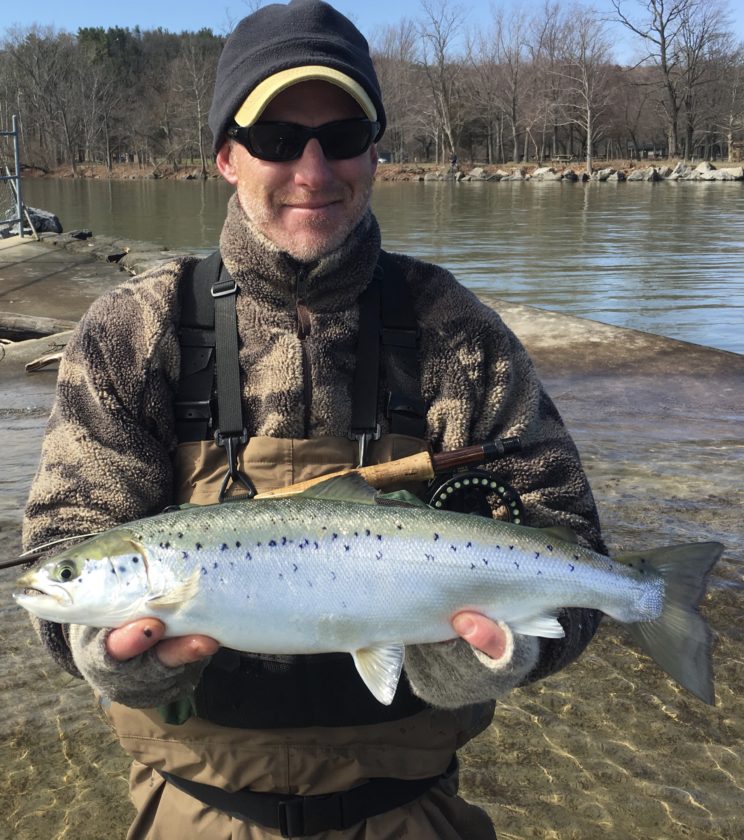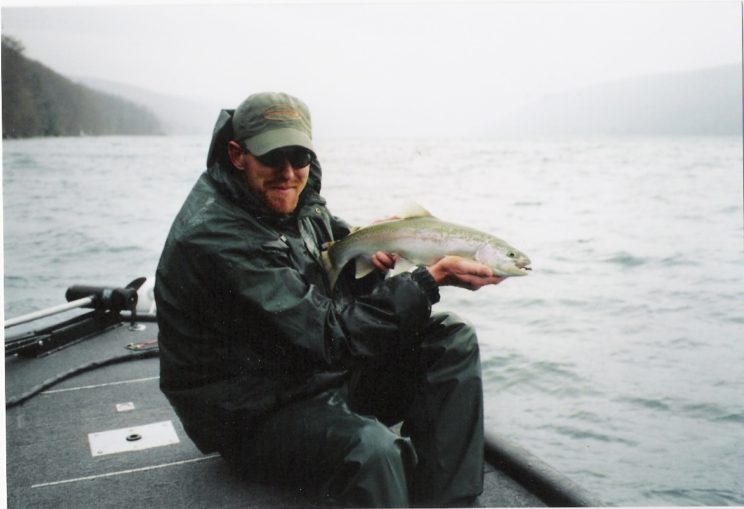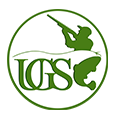
So I began this blog, weeks ago, to describe and introduce a technique I have refined that I call dead drift float fishing. But I have lost my way. And the whole topic of fly fishing lakes for trout is a voluminous one. One that I could write a book on. And these blogs may be the seed of what will grow into just such an endeavor.
I will soon come back to the components of dead drift float fishing, both for the fly rod and the spinning rod, but here today I digress into “The Other” kind of fly fishing on lakes.
![]()
![]() There are two types of lakes that a fly fisher in Upstate New York must learn to understand; Trout Lakes where prolific baitfish populations (such as shad and smelt) are present…And lakes where they are not. Lakes with these baitfish are common in Upstate New York. The trout that live in these “forage based lakes” grow big on a rich and plentiful diet of baitfish. In “natural lakes” without these baitfish populations, the trout are generally smaller on average and have a diet that is less piscivorous, meaning insects and crustaceans make up a much larger part of their diet than do minnows.
There are two types of lakes that a fly fisher in Upstate New York must learn to understand; Trout Lakes where prolific baitfish populations (such as shad and smelt) are present…And lakes where they are not. Lakes with these baitfish are common in Upstate New York. The trout that live in these “forage based lakes” grow big on a rich and plentiful diet of baitfish. In “natural lakes” without these baitfish populations, the trout are generally smaller on average and have a diet that is less piscivorous, meaning insects and crustaceans make up a much larger part of their diet than do minnows.
Trout that live in these two different types of lakes will behave different and the fly fisher has to adjust techniques and tackle to be successful. For these blogs “natural lakes” refers to lakes without populations of baitfish. “Forage based lakes” refers to lakes with baitfish populations.
The most daunting aspect of fly fishing a lake is deciding where to begin. When a fly fisher walks along the banks of a stream or river, if he or she is experienced, they can “read” the water. The location of trout becomes apparent. Not-so-much on a lake that can be several thousands of acres in size. The location of the trout will be dependent upon temperature, weather, wind, and food. And as these elements are always changing…So does the location of the trout.
On forage-based lakes the location of the baitfish is driven by temperature and weather. Therefore the location of the adult trout that live in these lakes will coincide. Rarely do they not coincide. The exceptions being when the large trout are spawning in Spring or Fall, when water temperatures are intolerable to the trout, or water temperatures are too cold for the bait and and it dies-off.
On forage based lakes sinking lines and heavier rods are a necessity. The trout are big and the flies are large. Casting a three inch streamer 70 feet, and getting that fly down quickly and efficiently into the strike zone of a trout, requires heavy fly gear.
The equipment for fly-fishing forage-based lakes is simple and uncomplicated. Anglers employ seven or eight weight fast-action rods with sinking lines. The sinking lines vary in sink rate depending on the depth you are fishing. For deep water a fast sinking line or full sink line is recommended. For moderate depths an intermediate line is recommended. And for shallow depths a sink-tip line is required. Special leader construction is nonexistent. A simple four to six feet of eight or ten pound fluorocarbon is attached directly to the fly line using a loop-to-loop connection. The streamer is attached to the length of fluoro. with a loop knot to give the streamer a greater range of motion.
Fly patterns simulate the baitfish the trout are known to be feeding on, wether it be smelt, emerald shiner, or shad. The size is more important than the color I believe. In spring the minnows are smaller than they are in the autumn. So a two and a half-inch fly, in May, perhaps more closely resembles the average minnow the trout is eating at that time. In late fall the fly pattern would be larger, say three and a half to four inches in length.
The fly caster on the forage-based lakes has a large window of opportunity to connect with big trout and salmon. When water temperatures in the shallows and transition areas of the lake stay below 60 degrees, the big trout can be found anywhere. But they are usually found where the bait is found. Water temperature will dictate.
Finding the right temperature and bait can be difficult on a lake that is 35 miles long and three miles wide. Easier on a smaller body of water. If and when you find the baitfish, using sonar, you will find the trout. But then you have to compete with the baitfish.
If you do not have the kind of boat or electronics that can locate baitfish on vast lakes, then your left with only one technique; To drift and cast and strip. Drift and cast and strip. Drift and cast and strip. Trying to get the attention of a hungry trout. And it works. But not often enough to make it a consistent way of doing business for my guide service.
And while the big trout in the forage-based lakes are active all winter in water shallow enough for fly casting, the weather we have on average here in Upstate New York, from mid-October through March, often limits comfortable (enjoyable) fly fishing from an open boat.
Spinning tackle a different story however. While I would rather reach for the fly rod than the spinning rod when pursuing trout, anywhere, it is wiser to pick the best tool for the job. I have out fished trollers and spin fishers with fly rods for trout and salmon on the big, forage-based lakes. But not too often.
Fact is, on forage-based lakes, spinning outfits and trolling equipment is far more efficient at catching trout. Period. So I am going to continue, in my next post, to explain the lines and flies and leaders I use to catch trout in the “natural lakes” …in the lakes where the trout eat crayfish and insect larvae and flies that resemble them! I find it far more interesting and challenging.


